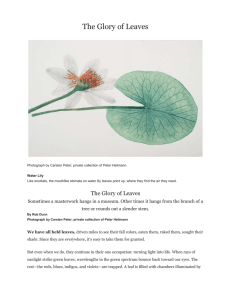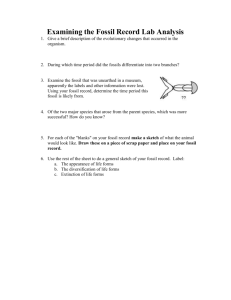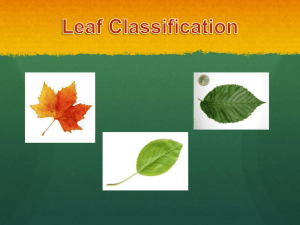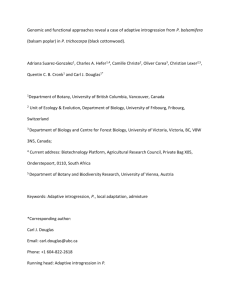Read more about it
advertisement
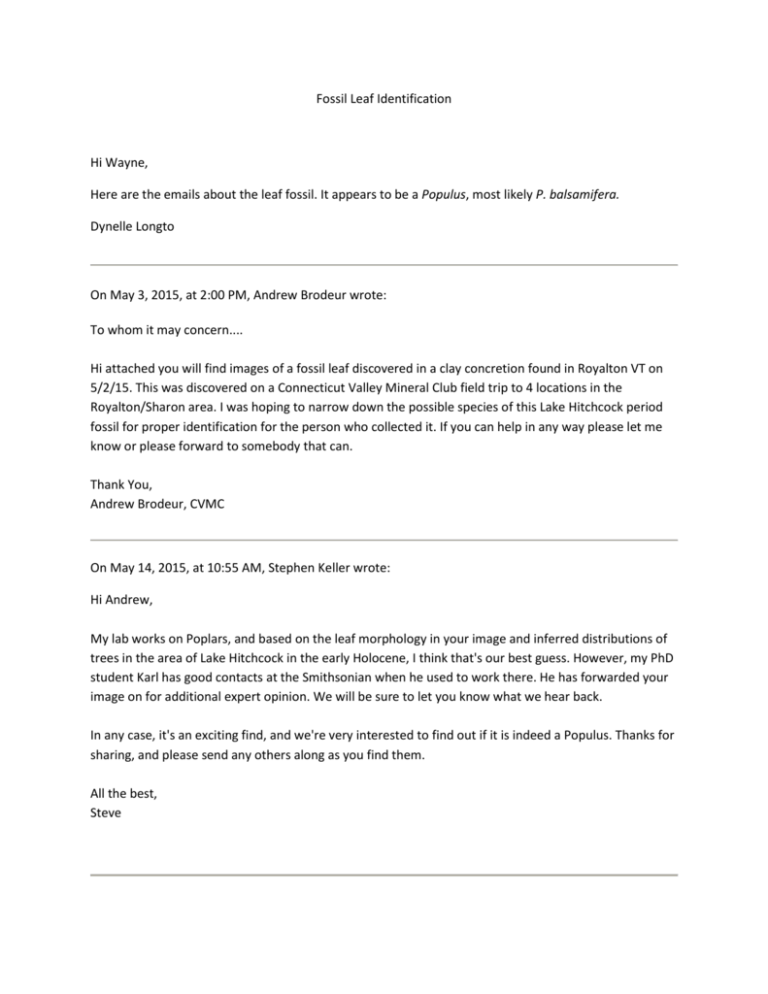
Fossil Leaf Identification Hi Wayne, Here are the emails about the leaf fossil. It appears to be a Populus, most likely P. balsamifera. Dynelle Longto On May 3, 2015, at 2:00 PM, Andrew Brodeur wrote: To whom it may concern.... Hi attached you will find images of a fossil leaf discovered in a clay concretion found in Royalton VT on 5/2/15. This was discovered on a Connecticut Valley Mineral Club field trip to 4 locations in the Royalton/Sharon area. I was hoping to narrow down the possible species of this Lake Hitchcock period fossil for proper identification for the person who collected it. If you can help in any way please let me know or please forward to somebody that can. Thank You, Andrew Brodeur, CVMC On May 14, 2015, at 10:55 AM, Stephen Keller wrote: Hi Andrew, My lab works on Poplars, and based on the leaf morphology in your image and inferred distributions of trees in the area of Lake Hitchcock in the early Holocene, I think that's our best guess. However, my PhD student Karl has good contacts at the Smithsonian when he used to work there. He has forwarded your image on for additional expert opinion. We will be sure to let you know what we hear back. In any case, it's an exciting find, and we're very interested to find out if it is indeed a Populus. Thanks for sharing, and please send any others along as you find them. All the best, Steve On May14, 2015, 10:51 AM, Plant Biology Department wrote: Hi Andrew, I forwarded your message to the UVM Plant Biology faculty, and the best guess at IDing your fossil leaf seems to be Balsam Poplar. I've copied Steve Keller and his grad student Karl Fetter in case they can offer any more insight. Best wishes, Sarah From: Karl Fetter Subject: Re: fossil leaf identification Date: Mon, 18 May 2015 12:03:34 Hi Andrew and others, Thanks for sharing this fossil find with us. It's an amazing specimen and I'm very excited to learn of this locality. There are other Lake Hitchcock and Lake Vermont localities with similar sediments that should bear megafossils, and its intriguing to think about what one could learn from a well sampled and document collection. I talked to a few friends of mine at the Smithsonian National Museum of Natural History and the consensus is that the fossil is definitely Populus and likely P. balsamifera. The key characters are the large, basal, opposite secondary veins and the the apical transition to alternate secondary veins. Without a better image of the veins, or the margin, it's difficult to determine the species. However if you look closely at the basal veins, you should find that there are three pairs of opposite veins that are palmately organized. The attached image of a juvenile P. balsamifera shows what I mean. At the base of the leaf, you can easily see the 2 large secondary veins that are opposite, two smaller opposite veins, and then 1 tiny vein that runs parallel to the margin at the base of the leaf. This is a character for P. balsamifera, but I'm not sure if it is exclusive to this species. You'll have to check the flora of North America and/or collect P. deltoides, P. gradidentata to see if they share this character, but I don't think they do. You may also want to degage the leaf to expose the margin. If you see small glandular teeth, you can be sure it's P. balsamifera. I don't think we need to worry about any Western taxa, because they should be present in the extant Eastern flora if they existed in the Pleistocene flora. Again, amazing specimen. Paleobotany is a hobby of mine, and I would love to go to this site and collect some material for a course I'm going to help teach next spring. Would you mind sharing the precise locality information with me? Did you find any other megafossils from this site? Thanks for sharing the find! Sincerely, Karl Fetter Graduate Student Keller Lab Department of Plant Biology University of Vermont See Photo Below See Photo Below See Photo Below





